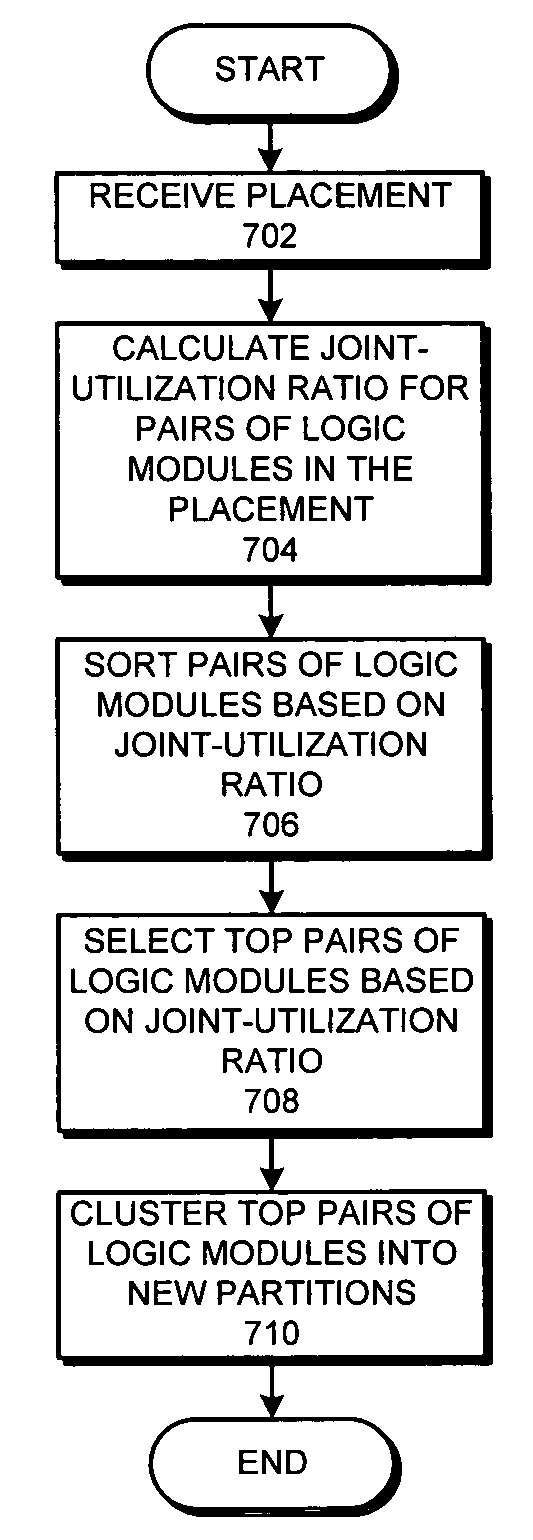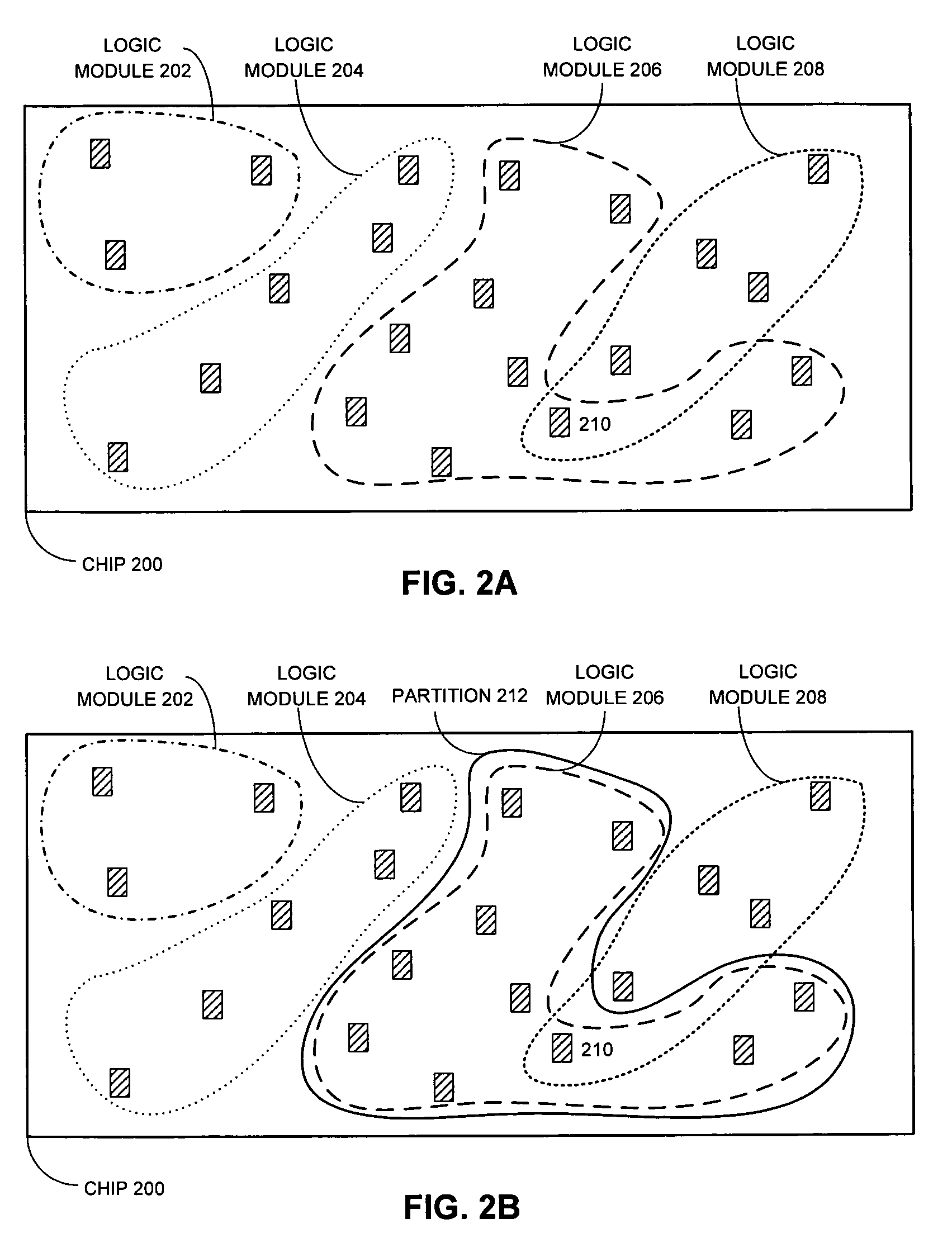Method and apparatus for partitioning an integrated circuit chip
a technology of integrated circuits and partitions, applied in computer aided design, program control, instruments, etc., can solve the problems of increasing difficulty in and increasing the difficulty of manually or automatically partitioning chips into physical partitions, etc., to achieve maximize the sensitivity of linear weight, minimize pin count, optimize the effect of pin coun
- Summary
- Abstract
- Description
- Claims
- Application Information
AI Technical Summary
Benefits of technology
Problems solved by technology
Method used
Image
Examples
Embodiment Construction
[0032]The following description is presented to enable any person skilled in the art to make and use the invention, and is provided in the context of a particular application and its requirements. Various modifications to the disclosed embodiments will be readily apparent to those skilled in the art, and the general principles defined herein may be applied to other embodiments and applications without departing from the spirit and scope of the present invention. Thus, the present invention is not limited to the embodiments shown, but is to be accorded the widest scope consistent with the principles and features disclosed herein.
Placement-Based Partitioning
[0033]The present invention automatically partitions a chip using a flat placement. In one embodiment of the present invention, the system uses a timing-driven placement technique. A timing-driven placement technique places cells to optimize timing. In another embodiment of the present invention, the system uses a power-driven plac...
PUM
 Login to View More
Login to View More Abstract
Description
Claims
Application Information
 Login to View More
Login to View More - R&D
- Intellectual Property
- Life Sciences
- Materials
- Tech Scout
- Unparalleled Data Quality
- Higher Quality Content
- 60% Fewer Hallucinations
Browse by: Latest US Patents, China's latest patents, Technical Efficacy Thesaurus, Application Domain, Technology Topic, Popular Technical Reports.
© 2025 PatSnap. All rights reserved.Legal|Privacy policy|Modern Slavery Act Transparency Statement|Sitemap|About US| Contact US: help@patsnap.com



